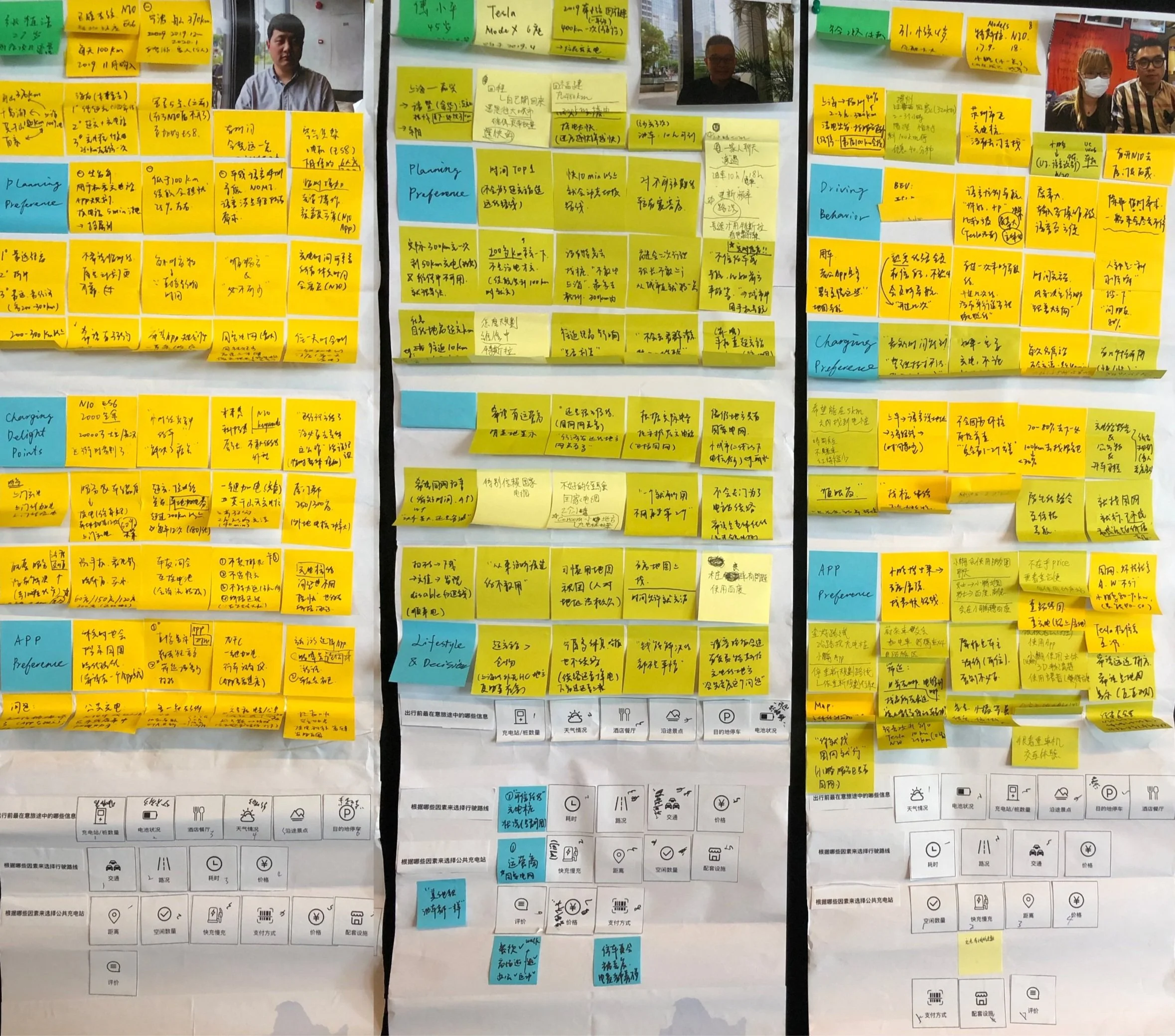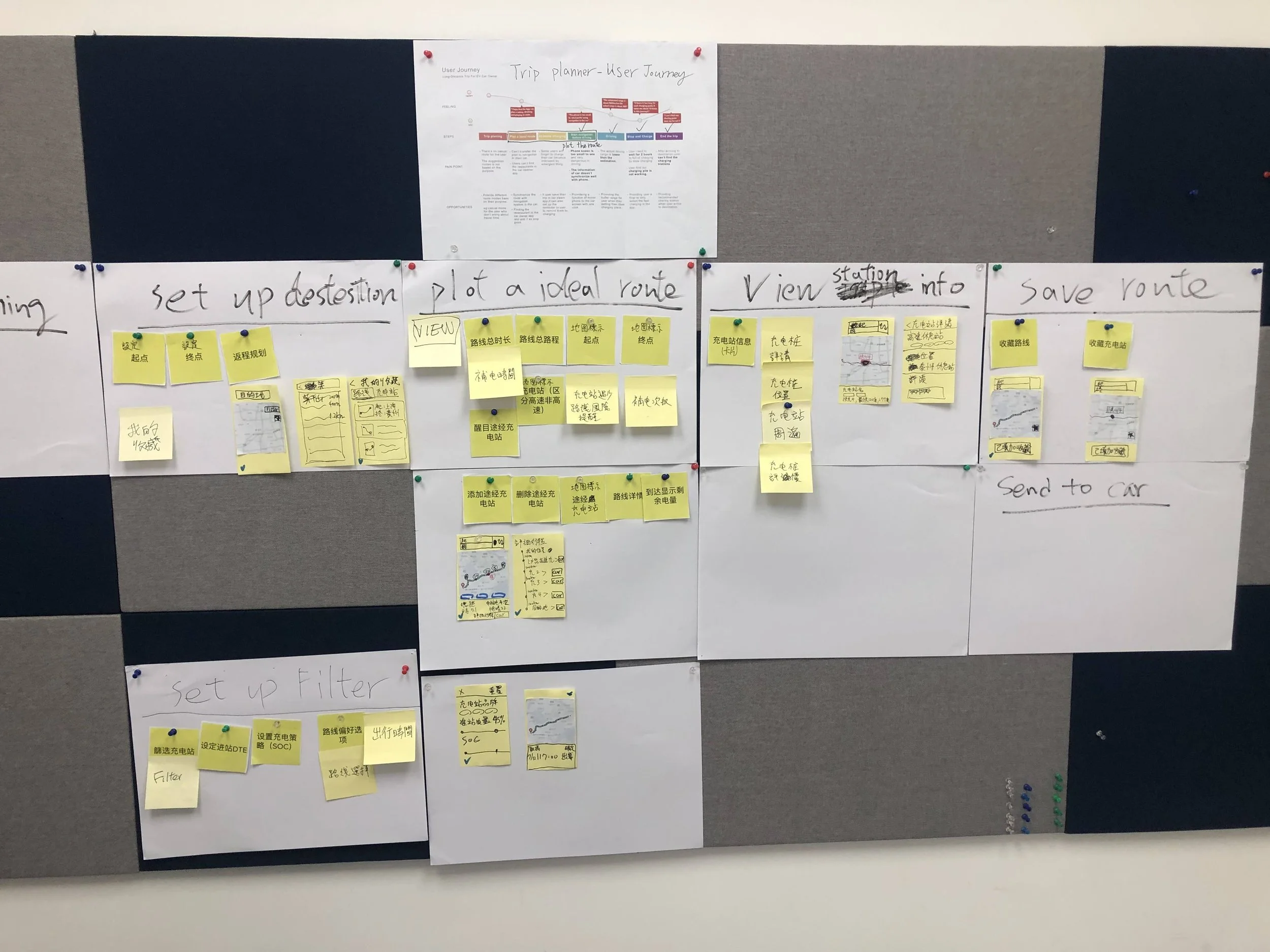
Trip Planner - UX Research
Overview
This is another project I did while at VMLY&R, building up a new feature for our client Ford Motor Company's future electric vehicle: the Trip Planner. I led the entire user research and interviews, and finally compiled and produced a report on the results of the research, which was presented to Ford headquarters.
Tools
Sketch, Mural, Invision, Keynote
Team
Team Edison: Ann, Tiffy Z
My Role
Researching, Interview, Presentation
Time
2020
Background
More and more people choose to drive a BEV instead of a gasoline car for long-distance road trips (>300KM). Therefore, electric vehicle manufacturers should fully consider users' demands for charging and entertainment under this scenario, and design a complete set of "BEV long-distance driving experiences". This has become the important product competitiveness of the electric vehicle brand.
Objective
Identify and define the Ford BEV owners’ aspirations on what and how the Trip Planner could help in their long-distance driving and public charging experience.
Research Plan
Identify the existing behavior and process of public charging (pain points and aspirations)
Identify the existing navigation methods (pain points, and aspirations)
Identify the situation of long-distance BEV driving (happy & unhappy experience)
Validate the factors of public charging stations that drivers most care about
Who we talked to
-
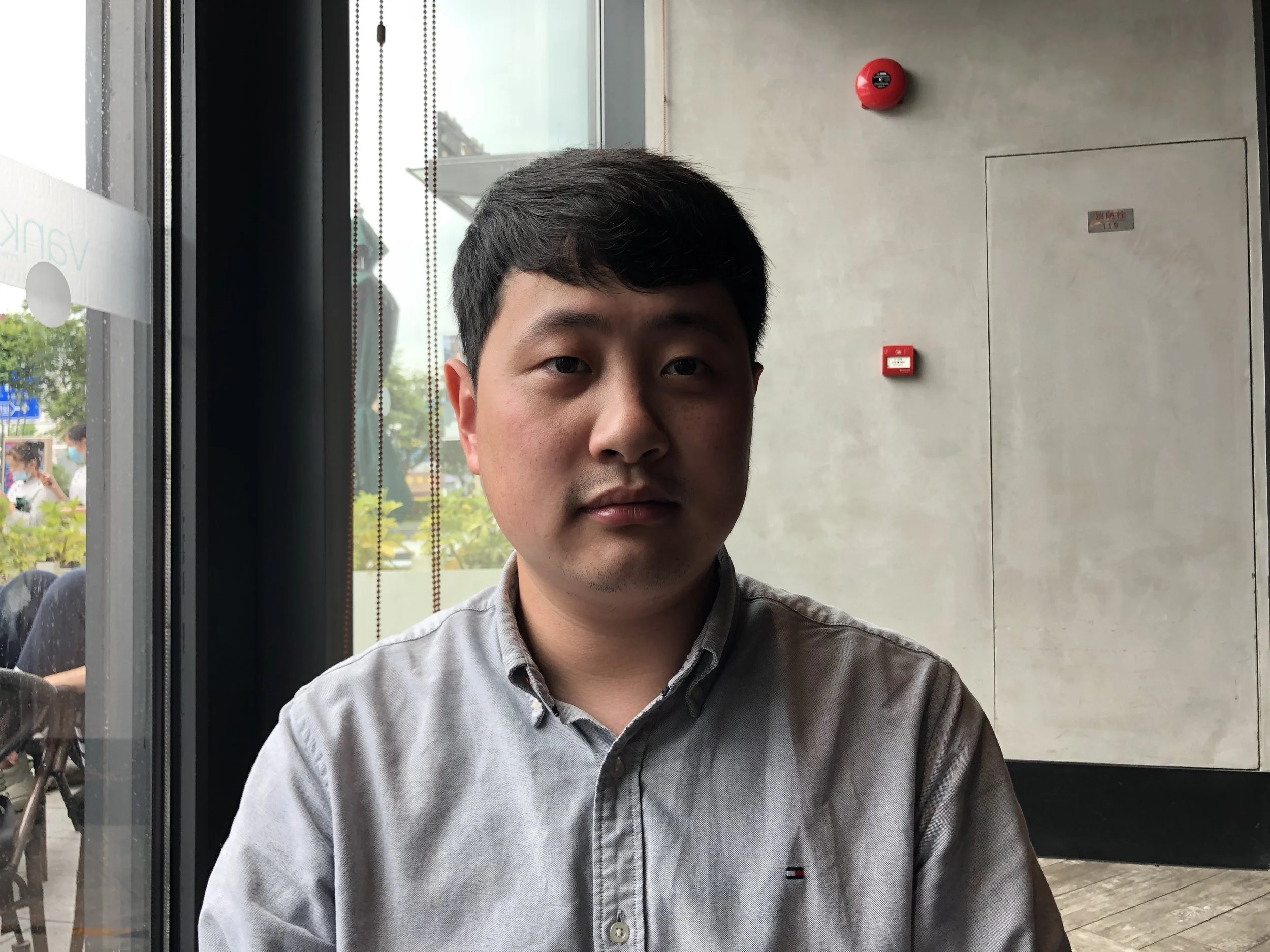
Zhihao Zhang
Age: 27 yrs old
Job: Development Manager
Car: NIO ES6
Driving Experience: Zhoushan, Nanjing, Qiandao Lake
-
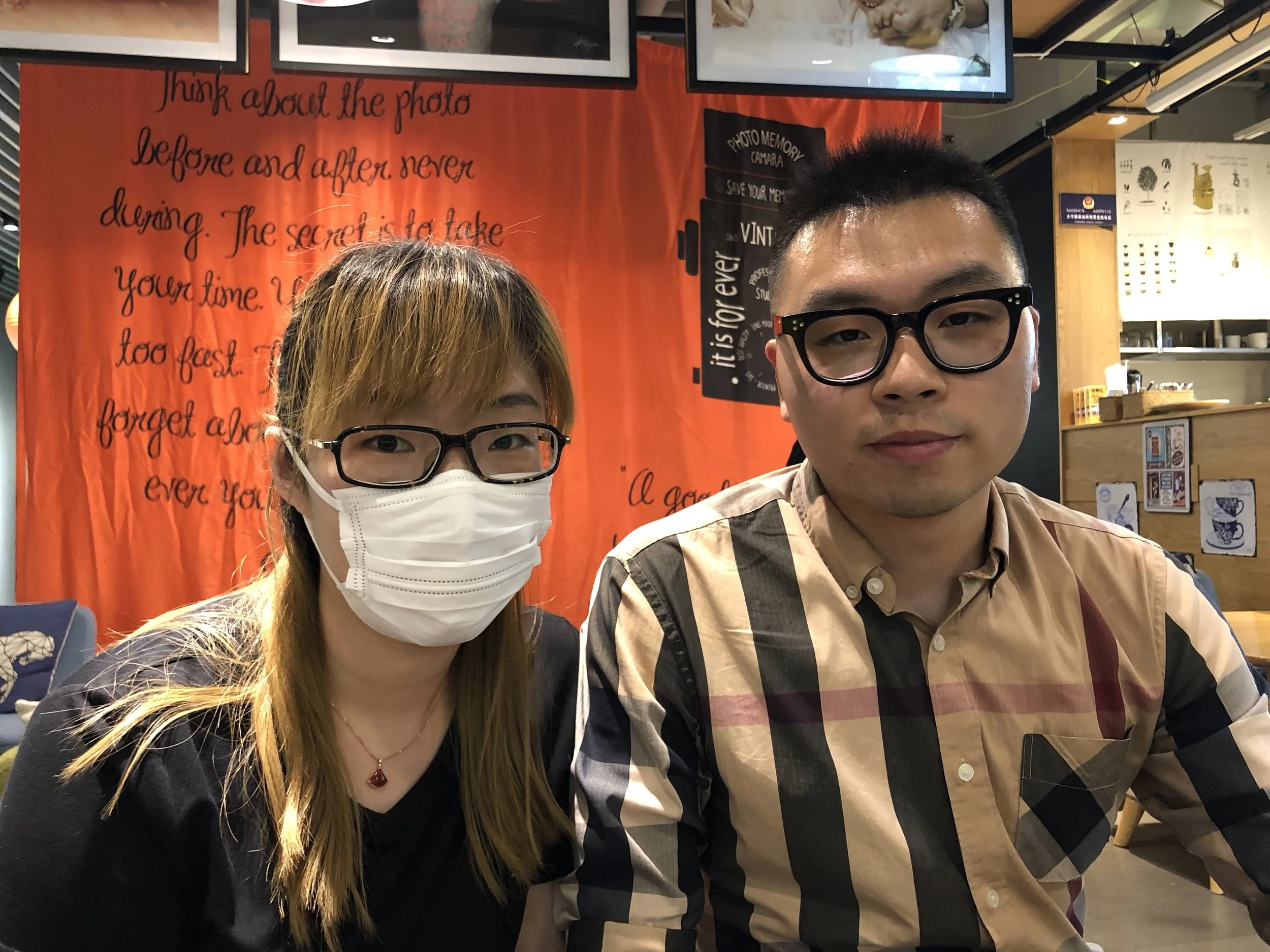
Lu Xu & her husband
Age: 31 yrs old
Job: Housewife
Car: Xiaopeng G3, NIO ES8, Tesla Model S
Driving Experience: Yangzhou, Suzhou, Xiamen, Tibet, Xinjiang
-
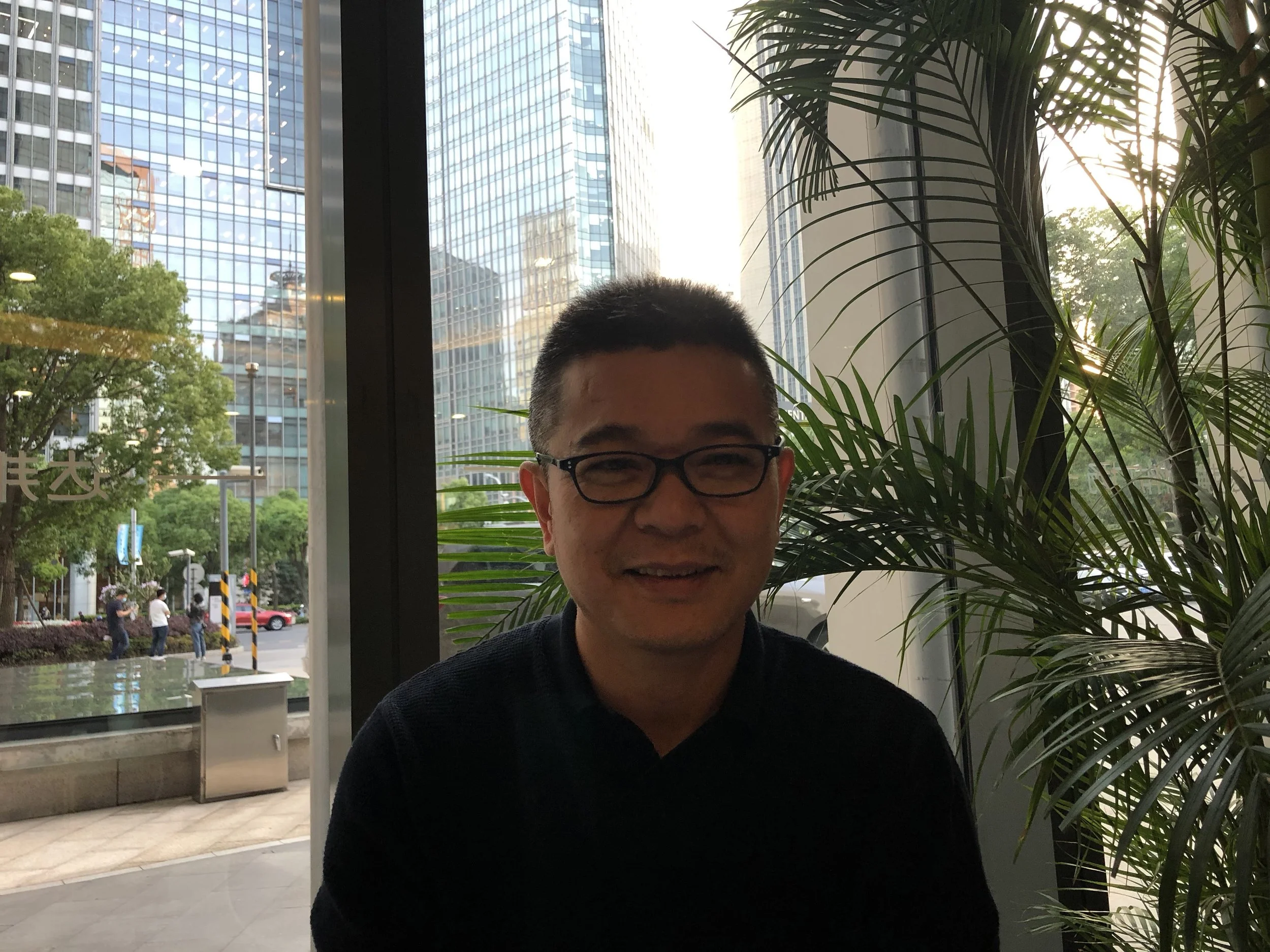
Xiaoping Fu
Age: 45 yrs old
Job: Film Industry
Car: Tesla Model X
Driving Experience: Fujian, Hangzhou, Lishui
Interviewed to identify the features that BEV owners want to have during long-distance driving
Research Process
Our Focus
Route Preference
Public Charging Preference
The most care things before driving
Research Methods
1-1 Interview
Journey Mapping
Feature Cards Sorting
Synthesis
After six user interviews, we organized all the notes and recordings to create an affinity mapping. This is the most important step in the preliminary research, which helps us target the insights reflected by users.
Key Insights
Depending on the purpose of the trip (going home/traveling/business), the driver's plans will vary, such as the number and length of stops. If this can be better guided early in the Trip Planner, users will be able to get the plan they want easier.
“If it is a self-driving tour, I hope to plan a whole line of eating, drinking, and playing, marking more places to eat and live along the way, and follow the navigation to the end.”
“The process of planning a route does not necessarily require a large screen, because mobile phone or voice operations will be more convenient, but the advantage of a large screen is to display the results more intuitively.”
BEV owners prefer to use their phone apps to plan the trip first and use the car screen to navigate during driving. The experience will be smoother if the planning and setting can be synced between phone and car.
“t is difficult to drive long distances to the north, and the temperature and altitude will affect the battery life of the car.”
Many facts (temperature/speed/passengers) will affect the actual driving range during a long trip, which increases the BEV driver’s anxiety. So they want to better control the buffer range of charging.
BEV owners want the navigation to give priority to recommending the route based on the quality and quantity of charging stations, so they can charge more efficiently to shorten the time of the journey.
“The first time I drove a Tesla to Fujian, I used to drive only 10 hours for a gas car, but I ended up driving for 18 hours because I spent a lot of time looking for charging points and charging.”
It is a challenge to find a place to charge around an unfamiliar destination, especially the rural area. Drivers would like to know to check this information before the trip.
“I went to Lishui to live in a homestay in the mountains. When I got there, I found that there was no place to charge. I had to drive to the city to charge again at night. It took dozens of kilometers back and forth, which was very troublesome.”
User Journey Map
Brainstorming
Next, with the clients, we brainstormed some potential features to solve the challenges users face. We listed all of them on the sticky notes and filtered out the most important features in the user flow, which will eventually be rendered on the final design.
Wireframing
After this series of research, it was time to design the product. Based on the importance of the features, I started by drawing a functional wireframe for the first version. Due to Ford's confidentiality policy, I will not show more detailed pages.
Next Steps…
Prototyping & Testing






